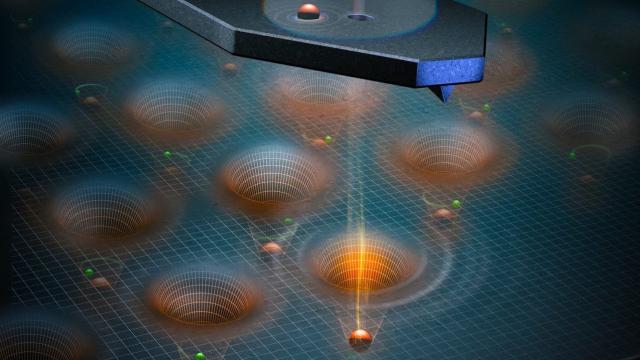A team of engineers from the University of Melbourne reckon quantum computers could be constructed cheaply and reliably using a new technique they’ve perfected.
This technique, the university explains, embeds single atoms in silicon wafers, one-by-one, mirroring methods used to build conventional devices.
According to the team behind the breakthrough, the new technique can create large scale patterns of counted atoms that are controlled so their quantum states can be manipulated, coupled and read-out.
Professor David Jamieson said his team’s vision was to use this technique to build a very, very large-scale quantum device.
“We believe we ultimately could make large-scale machines based on single atom quantum bits by using our method and taking advantage of the manufacturing techniques that the semiconductor industry has perfected,” Jamieson said.
The science behind this chip idea
As explained by the team, the idea takes advantage of the precision of the atomic force microscope, which has a sharp cantilever that “touches” the surface of a chip with a positioning accuracy of just half a nanometre, about the same as the spacing between atoms in a silicon crystal.
The team drilled a tiny hole in this cantilever, so that when it was showered with phosphorus atoms one would occasionally drop through the hole and embed in the silicon substrate.
They said the key was knowing precisely when one atom – and no more than one – had become embedded in the substrate. Then the cantilever could move to the next precise position on the array.
The team discovered that the kinetic energy of the atom as it ploughs into the silicon crystal and dissipates its energy by friction can be exploited to make a tiny electronic “click”.
Huh? Well, Jamieson said the team could “hear” the electronic click as each atom dropped into one of the 10,000 sites in the prototype device.
“One atom colliding with a piece of silicon makes a very faint click, but we have invented very sensitive electronics used to detect the click, it’s much amplified and gives a loud signal, a loud and reliable signal,” he said.
“That allows us to be very confident of our method. We can say, ‘Oh, there was a click. An atom just arrived. Now we can move the cantilever to the next spot and wait for the next atom.”
[related_content first=”1741145″]
Why is this so important? Well, until now, implanting atoms in silicon has been a haphazard process, where a silicon chip gets showered with phosphorus which implants in a random pattern, like raindrops on a window.
“This will allow us to engineer the quantum logic operations between large arrays of individual atoms, retaining highly accurate operations across the whole processor,” UNSW Scientia Professor Andrea Morello added.
“Instead of implanting many atoms in random locations and selecting the ones that work best, they will now be placed in an orderly array, similar to the transistors in conventional semiconductors computer chips.”
If this all seems a little confusing, that’s OK, it’s just an idea for a chip at the moment. Just know we have a tonne of great minds in the country working on some incredible things.
The technique was developed under the guidance of Professor David Jamieson and the study (published in Advanced Materials) was co-authored by engineers from UNSW Sydney, Helmholtz-Zentrum Dresden-Rossendorf, Leibniz Institute of Surface Engineering and RMIT.
